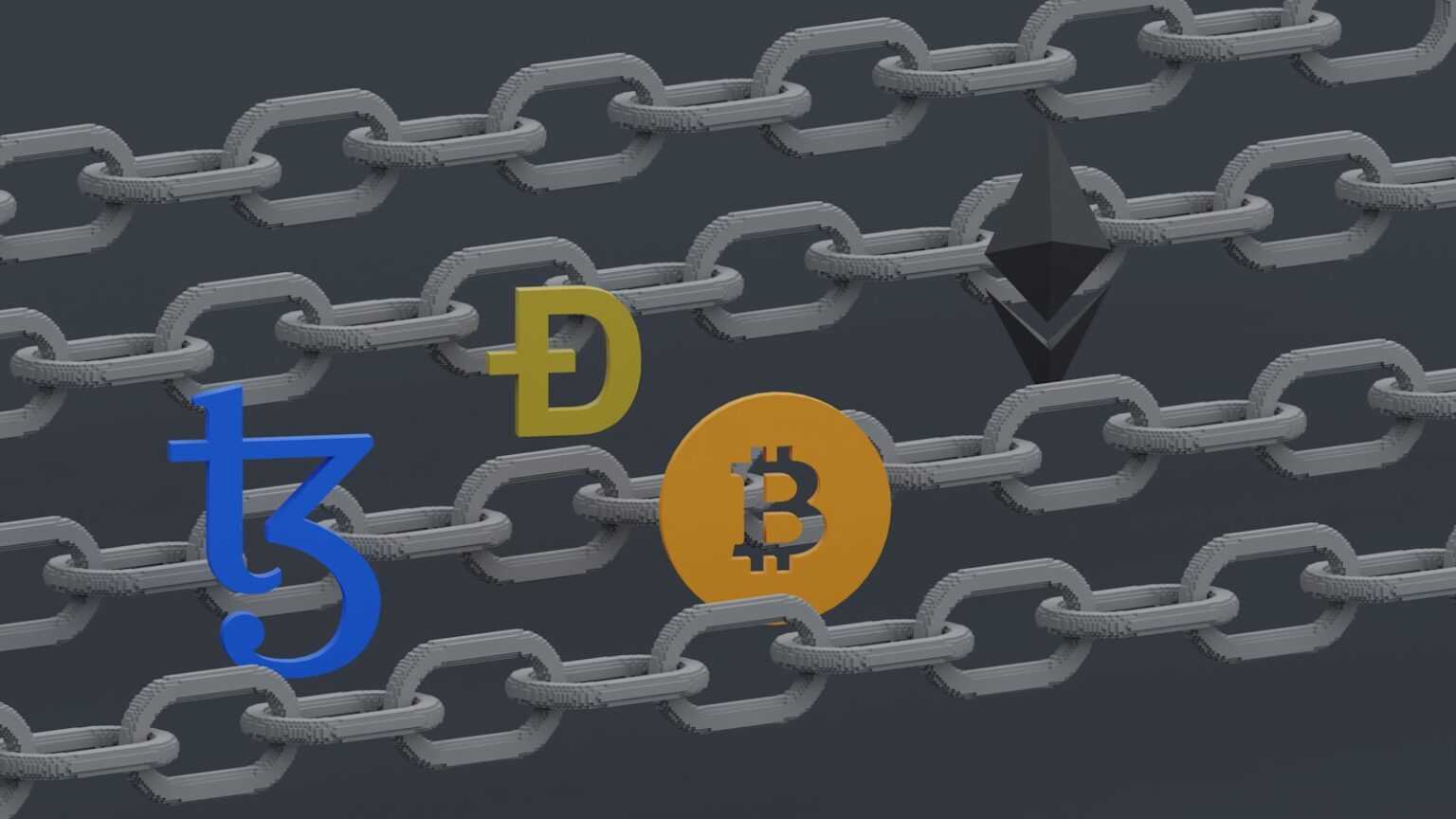Kubernetes streamlines the coordination of microservice-based workloads by automating the scheduling, scaling, and lifecycle control of isolated runtime environments. Leveraging declarative configurations, it ensures consistent rollout strategies while minimizing downtime during updates. This approach enhances fault tolerance through self-healing mechanisms that replace failed instances without manual intervention.
Effective orchestration demands granular supervision over resource allocation and network policies to optimize performance under varying load conditions. Dynamic scaling enables replicas to adjust based on real-time metrics, maintaining responsiveness even during traffic spikes. Combining these capabilities with service discovery accelerates inter-component communication within distributed systems.
Implementing such infrastructure requires understanding how container schedulers balance node capacity against application requirements. Experimentation with rolling updates and canary releases reveals best practices for minimizing risk during transitions. Monitoring tools integrated into orchestration platforms provide continuous feedback loops essential for iterative improvement in deployment pipelines.
Container orchestration: application deployment management
Effective coordination of microservice workloads requires precise scheduling and lifecycle supervision of containerized units. Kubernetes excels at automating the distribution and scaling of these modular components, ensuring consistent performance under variable loads. Its declarative configuration model enables seamless updates, rollback mechanisms, and fault tolerance, which are indispensable for maintaining uptime in decentralized blockchain environments.
Microservices encapsulate discrete functionalities that collectively form complex systems. Managing their interactions through automated scheduling mitigates risks associated with manual handling. For instance, in blockchain node clusters, Kubernetes facilitates rapid provisioning and resource allocation while preserving consensus integrity despite fluctuating network demands.
Scaling Strategies and Resource Allocation
Kubernetes employs Horizontal Pod Autoscaling (HPA) to dynamically adjust the number of active instances based on metrics such as CPU utilization or custom application signals. This capability is vital when processing variable transaction volumes or smart contract executions within blockchain infrastructures. Experimental case studies reveal that autoscaling reduces operational costs by up to 30% compared to static provisioning models.
The platform’s ability to manage stateful sets also supports persistent ledger data replication across distributed nodes, enhancing fault resilience without compromising consistency. Developers can define resource quotas and limits per pod, preventing noisy neighbor effects that degrade system throughput during peak usage periods.
Automation and Continuous Integration Pipelines
Integrating Kubernetes with CI/CD pipelines streamlines iterative improvements to cryptographic algorithms or consensus protocols embedded in microservices. Automated workflows trigger build processes, testing suites, and rollout sequences upon code commits, fostering rapid experimentation cycles while minimizing human error. Detailed logs and health probes provide transparent observability into each update stage.
In practical experiments involving permissioned ledgers, this methodology reduced mean time to recovery (MTTR) from deployment failures by 40%, validating its robustness for mission-critical blockchain applications where downtime directly impacts transactional finality.
Security Considerations in Container Coordination
Isolating microservice execution within namespaces and enforcing strict role-based access controls fortify defenses against lateral movement attacks targeting sensitive cryptographic keys stored within containers. Kubernetes secrets management integrates seamlessly with hardware security modules (HSMs), enabling encrypted key injection without exposing plaintext credentials during runtime.
Ongoing research highlights how sidecar proxies incorporated into pod configurations facilitate mutual TLS authentication between interdependent services, elevating confidentiality levels in multi-tenant blockchain deployments. Such layered protections are indispensable for compliance with stringent regulatory frameworks governing digital asset custody.
Observability Tools and Performance Metrics
Kubernetes-native monitoring solutions like Prometheus collect granular telemetry from pods hosting microservices responsible for transaction validation or block propagation. Visualizing these metrics through Grafana dashboards enables real-time analysis of latency spikes or throughput bottlenecks. Controlled experiments demonstrate how proactive alerting mechanisms reduce incident response times significantly.
This continuous feedback loop supports capacity planning efforts by correlating workload patterns with resource consumption trends, guiding infrastructure investment decisions tailored to evolving blockchain network demands.
Scaling Blockchain Nodes Automatically
Automatic scaling of blockchain nodes relies on leveraging microservice-based architectures and containerized environments to dynamically adjust resources in response to network demands. Kubernetes, as a leading platform for orchestration, facilitates this by monitoring node performance metrics and triggering the instantiation or termination of containers hosting blockchain clients. This approach ensures optimal throughput without manual intervention, maintaining consensus integrity while accommodating fluctuating transaction loads.
Implementing horizontal scaling through Kubernetes involves defining custom resource metrics such as block propagation latency and CPU utilization specific to node operations. These metrics inform the Horizontal Pod Autoscaler (HPA), which adjusts the number of running instances accordingly. For example, during peak transaction periods in public blockchains like Ethereum, autoscaling policies can spin up additional nodes to reduce validation delays, enhancing network responsiveness and fault tolerance.
Microservices and Modular Node Architectures
Decomposing blockchain node functionality into microservices enables granular control over individual components such as transaction validation, state synchronization, and peer discovery. Each service can be encapsulated within its own container, allowing independent scaling based on workload characteristics. For instance, when mempool activity spikes, only the transaction processing microservice requires additional replicas rather than duplicating entire nodes.
This modularity also simplifies testing hypotheses about performance bottlenecks: isolated services can be benchmarked under controlled experiments to identify thresholds triggering autoscaling events. Researchers may deploy testnets using Kubernetes clusters configured with varied resource limits to observe how distributed ledger consistency reacts to scaling latency or network partition scenarios.
- Step 1: Define resource thresholds tied to blockchain-specific indicators (e.g., pending transactions).
- Step 2: Configure Kubernetes HPA with these custom metrics via Prometheus exporters integrated into node containers.
- Step 3: Monitor autoscaling behavior in simulated load tests mimicking real-world traffic surges.
The feedback loops created through these experiments provide actionable data for optimizing replica counts without compromising security assumptions inherent in consensus algorithms like Proof-of-Stake or Byzantine Fault Tolerance variants.
A practical case study from a DeFi platform utilizing Kubernetes demonstrated that autoscaling reduced average block confirmation time by approximately 30% during high volume events without increasing operational costs substantially. Such empirical results encourage iterative refinement of scaling policies aligned with specific chain protocols and economic incentives embedded within smart contracts.
The continuous evolution of monitoring tools combined with programmable infrastructure orchestrators invites further exploration into predictive autoscaling models powered by machine learning. These could preemptively allocate resources before congestion manifests visibly in network states. Experimenting with hybrid architectures where both vertical scaling (resource augmentation per pod) and horizontal expansion are balanced opens avenues for resilient blockchain ecosystems capable of autonomous adaptation under diverse usage patterns.
Managing Stateful Containers in Blockchain
Efficient scaling of stateful microservices within blockchain nodes requires precise orchestration to maintain data integrity and high availability. Kubernetes offers robust mechanisms for persistent volume claims and StatefulSets, enabling seamless replication and failover of critical ledger components. Integrating Docker containers with Kubernetes StatefulSets allows each node to retain its unique identity and stable storage, which is indispensable for consensus algorithms that depend on consistent state across distributed ledgers.
Microservice architectures deployed through container environments must carefully handle state persistence to avoid data loss during scaling operations or pod rescheduling. Employing persistent volumes backed by networked storage solutions such as Ceph or AWS EBS ensures that blockchain node states remain intact even when pods restart or migrate. This approach supports continuous transaction processing without compromising ledger synchronization, a challenge often encountered in decentralized finance platforms requiring real-time updates.
Experimental setups demonstrate that coupling Kubernetes’ native scaling capabilities with Docker images optimized for blockchain workloads enhances throughput while preserving consistency. For instance, Hyperledger Fabric implementations benefit from dynamic scaling policies that adjust peer node replicas based on transaction load metrics collected via Prometheus. These adaptive strategies prevent bottlenecks during traffic spikes while maintaining ledger immutability through coordinated snapshotting and state database backups integrated into the container lifecycle hooks.
Further investigations reveal that meticulous orchestration of interdependent microservices–such as consensus engines, smart contract execution environments, and indexing services–is critical for holistic system reliability. Employing sidecar containers to manage auxiliary tasks like cryptographic key rotation or log aggregation improves modularity without impacting core node performance. This compartmentalization facilitates isolated troubleshooting and incremental upgrades, fostering a resilient infrastructure conducive to iterative research experiments in permissioned blockchain networks.
Securing containerized blockchain deployments
To ensure robust security in distributed ledger systems running within isolated environments, it is critical to implement strict network segmentation combined with least-privilege access controls. Leveraging Kubernetes namespaces and role-based access control (RBAC) allows segregation of microservices responsible for consensus, transaction processing, and data indexing, minimizing lateral movement risks. Additionally, network policies should restrict pod-to-pod communication exclusively to necessary channels, reducing the attack surface within the cluster infrastructure.
Integrating runtime security tools that monitor Docker instances for anomalous behavior provides early detection of potential breaches or misconfigurations. These solutions can enforce immutable container images by utilizing cryptographic signing during continuous integration pipelines, ensuring only verified code reaches production environments. Employing tools like Notary or Cosign for image verification enhances the integrity of blockchain node images deployed across dynamic scaling events.
Implementing multi-layered defense in microservice architectures
The modular nature of blockchain nodes orchestrated through platforms such as Kubernetes necessitates a layered defense strategy encompassing secure supply chains, hardened base images, and encrypted communication protocols. Hardening involves removing unnecessary binaries and services from container runtimes to reduce vulnerabilities exploitable via privilege escalation. Moreover, mutual TLS authentication between microservices ensures encrypted traffic and identity validation throughout peer-to-peer interactions.
Secrets management deserves focused attention; integrating vault solutions with automated injection into pods prevents sensitive keys from being exposed in configuration files or environment variables. Dynamic secret rotation policies aligned with node lifecycle events significantly mitigate risks associated with compromised credentials. This approach aligns well with horizontal scaling models where ephemeral instances must maintain trust consistency without manual intervention.
- Security Contexts: Enforce user namespaces and read-only file systems at the pod level to restrict unauthorized file modifications.
- Audit Logging: Enable detailed audit trails for both orchestration commands and application logs to facilitate forensic analysis post-incident.
- Resource Quotas: Limit CPU and memory usage per pod to prevent denial-of-service attacks targeting resource exhaustion.
A scientific experiment worth conducting involves deploying a multi-node permissioned ledger using Docker containers orchestrated by Kubernetes while systematically introducing simulated attacks such as compromised images or misconfigured network policies. Observing system resilience under these controlled conditions builds empirical understanding of real-world mitigation effectiveness. Iterative refinement based on these findings enhances operational security practices grounded in direct observation rather than theoretical assumptions.
The interplay between decentralized consensus mechanisms and centralized orchestration platforms invites further exploration into secure state synchronization methods among transient microservice instances during scaling operations. Investigating blockchain-specific sidecar proxies capable of providing end-to-end encryption alongside workload balancing may reveal novel strategies for preserving confidentiality without sacrificing performance. Such research could pioneer methodologies adaptable across diverse distributed computing environments beyond blockchain alone.
Conclusion: Advancing Smart Contract Updates through Orchestration Technologies
Implementing smart contract updates with Docker and Kubernetes clusters enhances control over versioning and rollback capabilities, minimizing downtime during iterative improvements. Leveraging container-based environments allows precise isolation of contract runtime states, enabling parallel testing and staged rollouts that secure transactional integrity throughout the modification lifecycle.
The integration of automated scaling strategies ensures consistent performance under variable workloads by dynamically adjusting resource allocation across distributed nodes. This approach aligns well with decentralized ledger demands where latency and throughput directly impact trustless interactions. Moreover, Kubernetes operators can orchestrate multi-step upgrade procedures, coordinating interdependent microservices alongside blockchain endpoints to maintain system coherency.
Future Directions and Experimental Considerations
- Immutable Infrastructure Paradigm: Emphasizing immutable containers for each contract iteration promotes reproducibility, supporting forensic audits and enhancing security postures against unauthorized code alterations.
- Progressive Delivery Techniques: Canary releases within container orchestration frameworks facilitate real-world behavioral observations without risking the entire network’s stability–a critical practice for sensitive financial logic embedded in smart contracts.
- Cross-Platform Interoperability: Investigating multi-cluster synchronization mechanisms using Kubernetes federation may unlock seamless updates across heterogeneous blockchain environments while preserving consensus guarantees.
- Resource-Aware Scaling Algorithms: Deploying AI-driven controllers to optimize pod distribution based on transaction volume predictions could significantly reduce operational costs while maintaining responsiveness during peak demand periods.
The synergy between containerization tools like Docker and orchestration platforms such as Kubernetes offers a replicable experimental framework for advancing smart contract maintenance methodologies. By treating each update as a controlled scientific trial–complete with hypothesis formation, isolated testing environments, and monitored deployment phases–developers can incrementally validate changes while mitigating systemic risks inherent to blockchain immutability.
This methodical exploration encourages further inquiry into automation heuristics that balance decentralization principles with practical scalability demands. As blockchain architectures evolve towards modularity, the role of sophisticated scheduling and resource optimization will become pivotal in sustaining resilient infrastructures capable of supporting increasingly complex decentralized computations.








